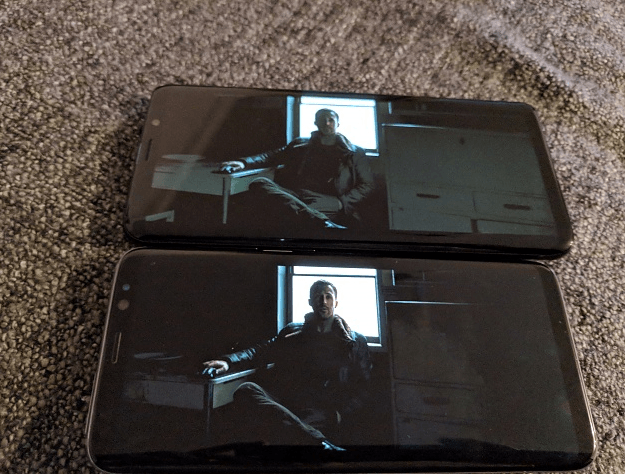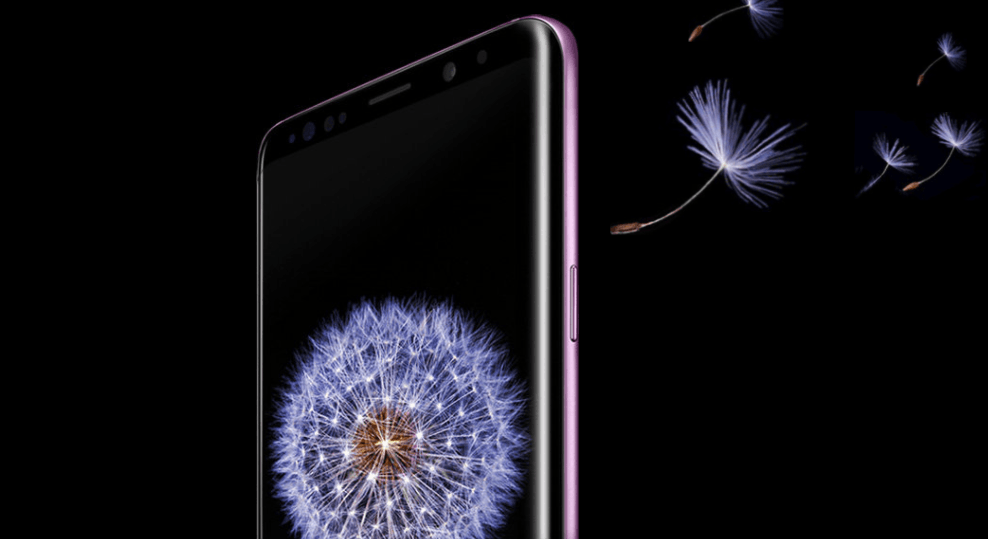Samsung’s Galaxy S9 and Galaxy S9 Plus have gorgeous displays. The Super AMOLED Infinity display on Samsung’s latest flagship models is unmatched in the smartphone industry. In fact, DisplayMate recently gave the Galaxy S9 display their “highest ever A+” rating, saying it had the “most innovative and high-performance” screen they had ever tested. However, if you scour through various online forums, you’ll find Galaxy S9 Plus owners complaining about a weird black crush screen issue on their phones.
Even having the world’s best smartphone display is no guarantee that it would not suffer from any issues. Users have often complained about overly saturated colors on OLED screens. According to user complaints in Samsung’s community forum and XDA Developers forum, many Galaxy S9 Plus owners are experiencing color banding or black crush screen issue. The problem is most severe watching videos at lower brightness settings.

In the black crush screen issue, the affected phones show blocks of black or pixelated images instead of showing crisp details in dark sections of videos. The screen becomes unable to display different shades of dark colors, and the details are lost similar to a compressed file. The problem seems to affect only the larger Galaxy S9 Plus as there have been few complaints from the Galaxy S9 owners.
It appears to be a software issue rather than a hardware one. Google’s Pixel 2 handsets that feature LG’s P-OLED display had suffered from a similar problem after a software update last year. Samsung hasn’t yet rolled out a software update to fix the issue. But affected users have discovered that they could address the issue using an app called Screen Balance. This is not a permanent solution, though.
Samsung has finally responded to the Galaxy S9 Plus’s black crush screen issue. The company said in a statement to Tom’s Guide that customer satisfaction was “core to our business and we aim to deliver the best possible experience.” Samsung said it was aware of “a limited number of reports” of the Galaxy S9 Plus displaying dark colors “differently than intended.” Samsung encouraged the affected customers to reach it directly at 1-800-SAMSUNG.
It is still unclear how widespread the issue is. Only a small number of Galaxy S9 Plus users appear to be affected. We expect Samsung to roll out a software update to fix the problem in the next few days.
Galaxy S9 and S9 Plus owners have complained about many other issues as well in the last few weeks. One Galaxy S9 Plus owner said on Reddit that their phone’s screen unexpectedly turned green when they unlocked it using the fingerprint. The display kept turning on green/black even after repeated attempts. When the user forced reset the handset, it “restarted in a full green screen.”
Another user had complained that they were watching a YouTube video when the left half of their Galaxy S9’s display turned purple. That’s strange. The purple box remained there even after restarting the phone, but it doesn’t appear in screenshots. In another case, a Galaxy S9’s camera started behaving like crazy in the super slow-mo mode.
Display issues aside, the Galaxy S9 and S9 Plus are excellent phones. However, Samsung might have messed up with the phone’s battery life by relying on two different processors for phones sold in different parts of the world. It’s no secret that Qualcomm’s Snapdragon 845 powers the Galaxy S9 sold in the US while most other countries get the units running Samsung’s in-house Exynos 9810 chips.
Recent battery tests conducted by AnandTech revealed that the Snapdragon version of Galaxy S9 delivered 10.48 hours of battery life while browsing the web on WiFi. In contrast, the Exynos model could manage a battery life of only 6.80 hours while web browsing on WiFi. That’s surprising considering the Exynos chips are designed by Samsung itself. So, the company should have been able to more tightly integrate the software and hardware to offer maximum battery life.





